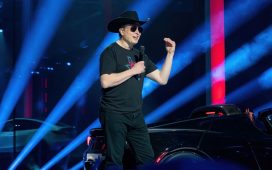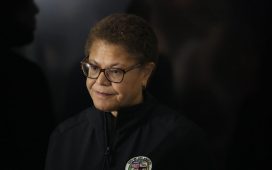Q: A year into your new job and just over a year into the pandemic, how would you assess American Honda’s performance?
A: My biggest impression is how proud I am of our associates and our dealers working through this. It has been one of the most challenging 12 months that we’ve faced in all companies and all industries. I’ve really been impressed with the strong sense of collaboration between our associates here at Honda and our dealers, particularly our advisory boards. The way that the groups communicate back and forth has really been one of the things that have allowed us to get through this.
Our production associates at our factories have just been unbelievable. Working through the conditions that met them when they came back from the COVID shutdowns, working through the supply shortages that we’ve had to deal with. Their great work has contributed greatly to the strong results we’ve had.
How have vehicle launches gone as the Honda and Acura brands pivot toward a greater focus on light trucks? How are the freshened Honda Ridgeline pickup and new-gen Acura MDX crossover doing?
The Ridgeline was the first new Honda product since the CR-V Hybrid almost a year ago, and it’s been extremely well received. When dealers say they can’t get enough, they usually talk like that in hyperbole, but it is true. The MDX had its best month ever [in March]. The Ridgeline and the Acura MDX are contributing to what we’re trying to do, which is transition ourselves from being a passenger car-dominant company to being more of a light-truck company.
But I don’t want to short sell the TLX [sedan]. Market conditions when it came out were very difficult, but I think we’re gaining some traction. We’re launching the Type S version. So I think there’s lot of good things to talk about.
How is American Honda handling the semiconductor shortage? Are factories having to pick and choose the models to build?
There’s a lot coming at us. Microchips, the freezing weather in Texas that impacted anything that was petrochemical-based, and one thing that’s not getting a lot of press these days is the ports being clogged up, particularly on the West Coast. It’s hard to get stuff from overseas to the production line. Our purchasing and production associates have been doing a fantastic job. We’re a global company — we build stuff all around the world. And I want to go back 10 years ago to the tsunami and earthquake in Japan. There’s still a number of us left in the company from those days. And we’re following a lot of the playbook we put in place back then.
It really comes down to strong communication and a good awareness of the reality of the situation. We basically are meeting once a week with our sales and our production associates, including people from all around the world. We look at: What’s our supply from a parts perspective? What’s our inventory status? What products are we short of, and what products do we have enough of? And we’re making decisions on a week-to-week basis on how we proceed.
What we learned 10 years ago is that as things change, you can’t get locked in to any one sort of path.
Honda is moving forward on electrification after some hesitation. What’s the new direction?
Respect for the environment, protecting the environment has really been something that Mr. [Soichiro] Honda brought with him when the company was created all those years ago. The very first EPA fuel economy ratings came out 45 years ago, and the Honda Civic was the No. 1 vehicle. And the current model-year EPA ratings came out a little while ago, and guess what? Honda leads all full-line automakers.
It’s a fair comment to make about Honda that we weren’t the leaders in the race to battery-electric vehicles. But since April 1, we have a new global CEO, Toshihiro Mibe. And on April 23, he gave a press conference and really outlined our plans towards a zero-emissions future. He set a target that by 2040, we will be selling exclusively zero-emission vehicles. That seems like a long way off, but it’s not. From a vehicle life span, you are talking three generations of vehicles. We now have our direction. We’ve put our stake in the ground, so to speak. We now need to move quickly and decisively to get going where we’re going.
What will be the electrification strategy in North America?
Our strategy in North America will be to start selling more of the traditional gasoline-electric hybrid versions of our products, focusing on the CR-V and Accord. We want to significantly increase the percentage of hybrids we sell. Our strategy will be a very simple one: We’re going to make the hybrid trim the most desirable trim of those two models. That is the logical next step for consumers to take before they transition to a BEV vehicle. If we can create a larger owner base of the traditional hybrids, they will become the future customers for the BEV models that will follow.
We will have 2024 BEV products for both the Honda and the Acura brands. Our goal as a sales organization is to generate the customer base over the next three years for those products. In the second half of the decade, we’ll be using our Honda e:Architecture to launch uniquely developed EVs.
In both Japan and North America, Honda has been going through a management reorganization. How is that going, and what are some concrete benefits so far?
For the last couple of years, across the globe, we’ve been on a journey to really get back to our roots of being more customer-focused on what we’re doing. Everything we’ve been doing is to boost the speed with which we move, our efficiency, the quality of our operations, with the focus on the customer. Some of those restructurings have been very dramatic in terms of what we’ve done on our manufacturing side, combining all of the manufacturing depots into one Honda Development and Manufacturing of America.
On the sales side of the business, we’ve been undergoing the same thing. One of the things we’ve been really trying to do is to create opportunities for associates to move into more senior positions, to start looking at the business differently, to start rethinking how we do things. It’s time for us to give the next generation of Honda leaders their opportunity to put their stamp on the future.







